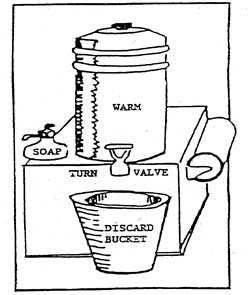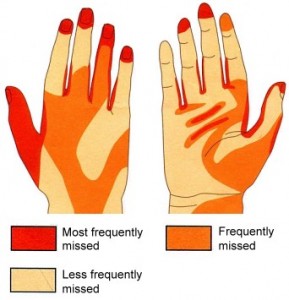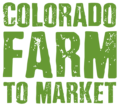What is a Potentially Hazardous Food?
The original concept for “Potentially Hazardous Foods” (PHF) acknowledges that certain foods (for example, meat, poultry, milk products, eggs, and other high water activity (aw), pH neutral products) require time and temperature control to maintain safety. The FDA Food Code currently defines high risk or potentially hazardous foods as any food that requires time/temperature control for safety to limit pathogenic microorganism growth or toxin formation. These include an animal food (a food of animal origin) that is raw or heat-treated; a food of plant origin that is heat-treated or consists of raw seed sprouts; cut melons; and garlic-in-oil mixtures that are not modified in a way that results in mixtures that do not support growth as specified under Subparagraph (a) of this definition (see FDA 1999, pt 1-201.10[B][61]).
- These products have a well-documented history of causing foodborne illness outbreaks when subjected to temperature abuse; therefore, time/temperature control is essential to protect the public’s health.
- These products contribute to illness not just through temperature abuse but from mishandling as well.
What is a Time/Temperature Control for Safety?
- The term “Time/Temperature Controlled for Safety” (TCS) was proposed to avoid confusion with the term “hazard” as it is applied in Hazard Analysis and Critical Control Point (HACCP).
- Time/temperature controls are used to reduce or eliminate pathogenic microorganism growth or toxin formation in food.
- For example, canning vegetables which are low in acid require the use of pressure, high temperature, and specific time to eliminate foodborne illness causing microorganisms.
Hot Holding: Potentially hazardous food must be maintained at 140° F or higher.
Cold Holding: Potentially hazardous food must be maintained at 41° F or below.
Cooking:
- 165° F for 15 seconds – poultry; stuffing containing fish, meat, or poultry
- 155° F for 15 seconds – comminuted fish, meat, pooled raw eggs
- 145° F for 15 seconds – raw shell eggs that are broken and prepared
- 165° F for leftovers and reheated products
Thawing:
- Take meat out of the freezer and place in a refrigerator at least 24 hours in advance.
- Place vacuum‐packed meats in cool water and they will thaw very fast (paper wrapped meats can thaw in water in a leak‐proof plastic bag). Change the water every 30 minutes, until thawed, so that safe temperatures are maintained during thawing, and cook the meat immediately. Do not refreeze raw ground meat thawed in cold water or in the microwave oven unless you cook it first. Small packages may thaw in an hour or less; a 3‐4 lbs. roast may take 2-3 hours.
- Many find the microwave to be a fast and acceptable way to thaw meat, but be careful, thawing correctly in a microwave can be challenging.
- Do not thaw meat on the counter.
Cooling: Cooked potentially hazardous food shall be cooled from 140° F to 70° F within two hours or less; and from 70° F to 41° F within four hours or less.
Reheating for Hot Holding: Potentially hazardous food that is cooked, cooled, and reheated for hot holding shall be reheated so that all parts of the food reach a temperature of at least 165°F for 15 seconds. (If food is reheated in a microwave, all parts of the food must reach a temperature of at least 165°F and be allowed to stand covered for two minutes after reheating.)
Farmers’ Market Food Safety: Farmer’s Markets are enjoying renewed popularity around the country. They provide an excellent opportunity for growers to sell their products for added income. It is crucial for Farmer’s Market vendors to ensure the safety of the products they offer for sale. Foodborne illnesses have been linked with Farmer’s Markets in the past. Selling clean, wholesome food is a primary part of creating and keeping customer confidence – food spoilage is a disaster that can undo all a producer’s hard work and their hard-won reputation. If customers are unhappy with the products they purchase from a vendor’s stand, they will not be back. Word-of-mouth advertisement from a bad experience may not be good for future business. Building sanitation and food safety into the vendor’s routine is an essential component of success for both farmers and the future of Farmer’s Markets.
Helpful Links:
How to handle produce: Wash fruits and vegetables, unless washing would reduce their quality or increase spoilage, as with raspberries, potatoes and onions. In that case, remove visible dirt. Customers may consume the fruits and vegetables without washing them after purchase; therefore it’s vitally important to sell them a safe product.
Offering Samples:
Produce used for samples must be washed with cool water. If it is thick-skinned produce, scrub with a clean vegetable brush. This removes nearly all insects, dirt, bacteria and some pesticide residues that can contaminate the interior of the produce once it is cut.
- For consumer information regarding washing fresh produce, see Colorado State University Extension Guide to Washing Fresh Produce.
- If washed produce is not cut for samples, immediately store it in a clean container to prevent re-soiling of the exterior surface prior to cutting.
- Cut samples must be covered or protected if flies are present, the area is dusty, or weather conditions are such that the samples could become contaminated.
- Minimize bare hand contact while cutting and handling cut produce. This can be done by using single service items (as described below). If single service gloves are used, change the gloves often to prevent soiled gloves from cross-contaminating samples. Remember to wash hands between changing gloves.
- Use single service items to distribute samples to customers. Examples are paper plates, cups, napkins, plastic utensils or toothpicks. The customer can then dispose of single service items once the product is consumed.
Cleanliness and Sanitation: Proper sanitation is critical. At all stages in your food-handling process – preparation, storage, display and serving – you must make sure that all your work surfaces and your equipment are both clean and sanitary.
What’s the difference?
Clean means free of visible dirt; sanitary means free of harmful levels of disease-causing microorganisms and other harmful contaminants. Any dish, counter or utensil must be clean before it can be sanitized.
- Use clean and sanitized dishes, knives, utensils and cutting boards for cutting and displaying produce. Wash with soapy water, rinse with clean water, sanitize, and air dry.
- To sanitize dishes, knives, utensils and cutting boards: place the items in 75° F water (slightly cool to the touch) that has one tablespoon of regular, not scented chlorine bleach per gallon of water, for one minute, then allow to air dry.
- When you’re on the move, consider constructing the portable system. See illustration below.

- Warm water (100 °F – 120 °F) can be held in a 5-gallon insulated container with a spigot that allows continuous flow.
- A bucket can be used to collect dirty water.
- Liquid soap and paper towels should be provided and a trash receptacle for discarded paper towels.
Hygiene and Hand Washing
Health is in your hands: What skill do surgeons, chefs and farmers have in common? Hand washing! Practicing proper hand washing may be the single most important action you can take to prevent contamination of freshly harvested produce. According to the Centers for Disease Control and Prevention, up to 80% of all infections may be transmitted by our hands. Making sure that fruits and vegetables stay safe from farm to table is critical for the health of your customers. They want the fresh flavor of locally grown produce, they need the nutritional benefits, but nobody needs exposure to microbes.

Practice good hygiene: Hands must be properly washed when selling products at the Farmer’s Market and when preparing and distributing samples. Hands must be washed after smoking, eating, drinking, using the restroom, or anytime contamination occurs. Using an alcohol-based hand sanitizer can help prevent the spread of bacteria and viruses but is not a substitute for washing hands.
Steps for proper hand washing:
- Wet hands with clean, warm water.
- Use vigorous friction on areas of lathered fingers, fingertips, under the nails, areas between the fingers, hands and arms for at least 15 seconds.
- Rinse well under clean, running water.
- Dry hands with disposable paper towel or hot air hand dryer.
Bioterrorism
Agriculture and food are considered critical infrastructure under U.S. Homeland Security policy. It is advisable that farmers’ market vendors and others selling food to the public be aware of terrorism activities that could impact any portion of the U.S. food supply. As such, the Colorado Information Analysis Center (CIAC) states that terrorist operations usually begin with extensive planning. The CIAC advises that citizens watch for suspicious activities and report them to the proper authorities. They provide Eight Signs of Terrorism as a guide. USDA FSIS also information, Keep America’s Food Safe.
Related Links:
- CDC: Clean Hands Save Lives
- CDC: Put your hands together video
- Ask Karen, a USDA safety frequently asked questions app for your smart phone
- Food Safety for Small-Scale Farmers Webinar
- Guidance for Industry: Food Producers, Processors, and Transporters: Food Security Preventive Measures Guidance
- Guidance for Industry: Retail Food Stores and Food Service Establishments: Food Security Preventive Measures Guidance
- Staying Healthy: The Science Behind Germs
